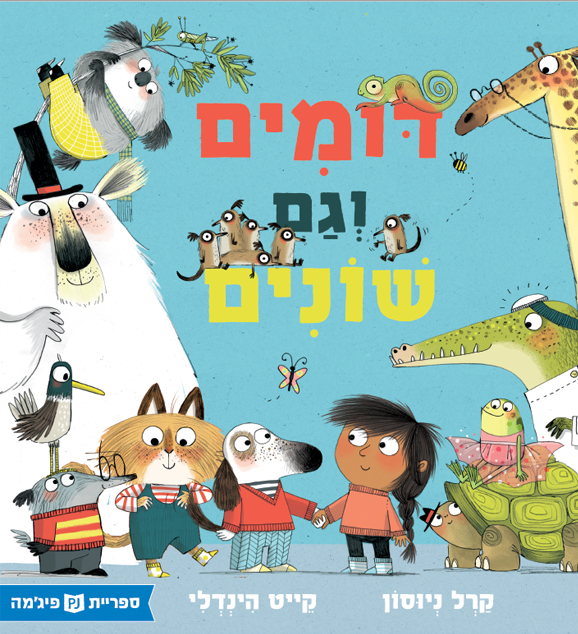The Same but Different
Written by: Karl Newson
Illustrated by: Kate Hindley
Reading together, experiencing together
Dear Parents,
We, humans, are similar but also different. Some like the same song, while others prefer to listen to a different kind of music. Some like to play on their own, while others prefer playing together. Our differences and similarities are not obvious to young children, taking their first social steps at preschool, the family circle, and the world.
The similarity and difference challenge stays with us throughout our lives, just as it accompanied the lives of previous generations. The sages of the Talmud discussed both human similarities and differences, highlighting three differences:
In three things man differs from his fellow: in voice, face (appearance) and mind. [Talmud, Sanhedrin, 38a]
Our outward appearance and voice pitch are different and easily distinguishable, but our rabbis have added another important difference, that of our opinions. Our different opinions distinguish us as human beings, making our relationships and friendships interesting as well as surprising.





